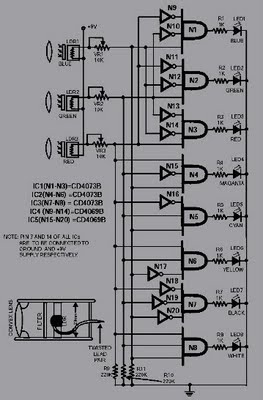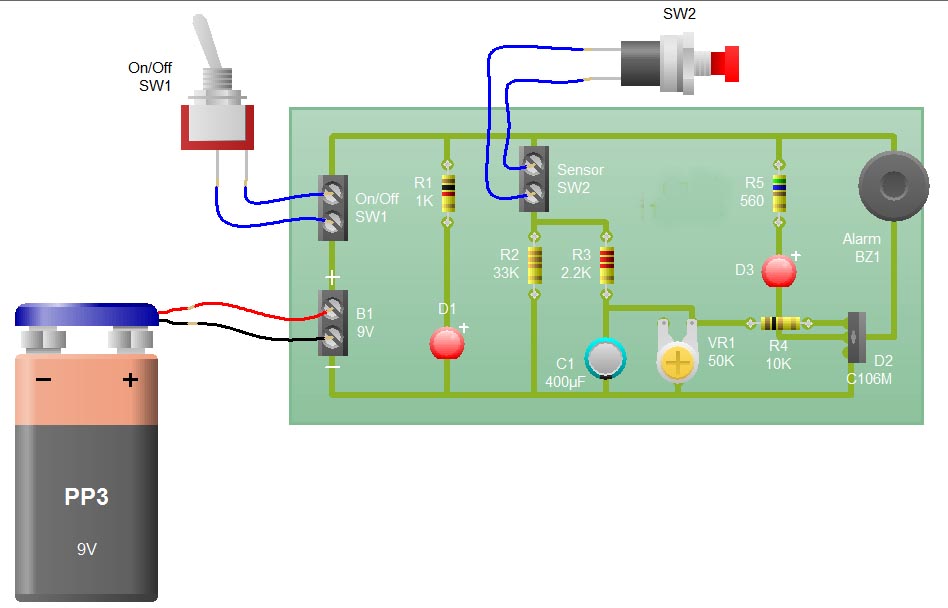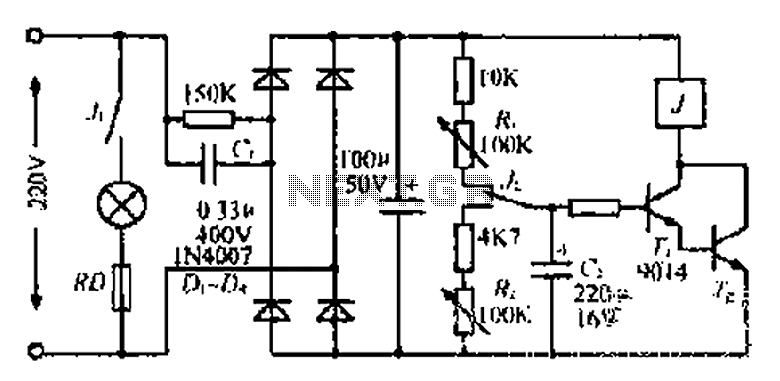
colours sensor detector circuit

This circuit is capable of sensing eight colors: blue, green, and red (primary colors); magenta, yellow, and cyan (secondary colors); along with black and white. It is designed based on the principles of optics and digital electronics. The object whose color needs to be detected must be positioned in front of the system.
The color detection circuit utilizes a combination of photodetectors and microcontrollers to accurately identify and differentiate between various colors. The primary colors are detected using RGB (Red, Green, Blue) sensors, which measure the intensity of light in each of these three wavelengths. The readings from these sensors are then processed to determine the presence of primary and secondary colors based on predefined thresholds.
For detecting black and white, the circuit employs a light intensity measurement that assesses the overall brightness of the object. When the intensity is low, the object is classified as black, while a high intensity indicates the presence of white. The circuit's design incorporates analog-to-digital converters (ADCs) to convert the analog signals from the sensors into digital data that can be processed by the microcontroller.
The microcontroller is programmed with an algorithm that compares the sensor readings against a color lookup table, enabling real-time color recognition. This allows the system to output the detected color through a display or interface, providing immediate feedback.
In terms of hardware, the circuit may include additional components such as resistors, capacitors, and LEDs for status indication. Proper calibration of the sensors is essential to ensure accuracy and reliability in various lighting conditions. Overall, this color sensing circuit serves applications in robotics, automation, and interactive systems, where color recognition is crucial for functionality.This circuit can sense eight colours, i. e. blue, green and red (primary colours); magenta, yellow and cyan (secondary colours); and black and white. The circuit is based on the fundamentals of optics and digital electronics. The object whose colour is required to be detected should be placed in front of the system. 🔗 External reference
The color detection circuit utilizes a combination of photodetectors and microcontrollers to accurately identify and differentiate between various colors. The primary colors are detected using RGB (Red, Green, Blue) sensors, which measure the intensity of light in each of these three wavelengths. The readings from these sensors are then processed to determine the presence of primary and secondary colors based on predefined thresholds.
For detecting black and white, the circuit employs a light intensity measurement that assesses the overall brightness of the object. When the intensity is low, the object is classified as black, while a high intensity indicates the presence of white. The circuit's design incorporates analog-to-digital converters (ADCs) to convert the analog signals from the sensors into digital data that can be processed by the microcontroller.
The microcontroller is programmed with an algorithm that compares the sensor readings against a color lookup table, enabling real-time color recognition. This allows the system to output the detected color through a display or interface, providing immediate feedback.
In terms of hardware, the circuit may include additional components such as resistors, capacitors, and LEDs for status indication. Proper calibration of the sensors is essential to ensure accuracy and reliability in various lighting conditions. Overall, this color sensing circuit serves applications in robotics, automation, and interactive systems, where color recognition is crucial for functionality.This circuit can sense eight colours, i. e. blue, green and red (primary colours); magenta, yellow and cyan (secondary colours); and black and white. The circuit is based on the fundamentals of optics and digital electronics. The object whose colour is required to be detected should be placed in front of the system. 🔗 External reference





